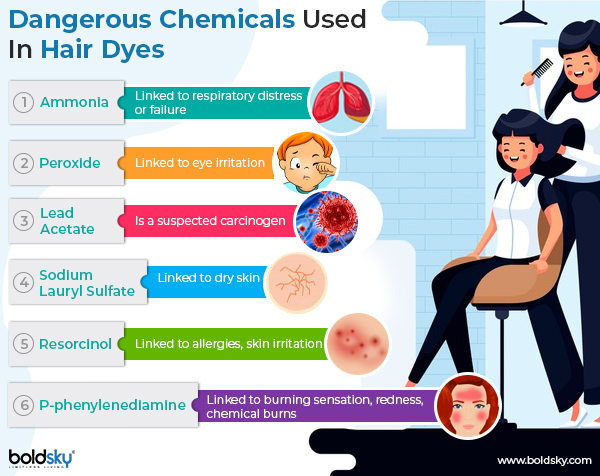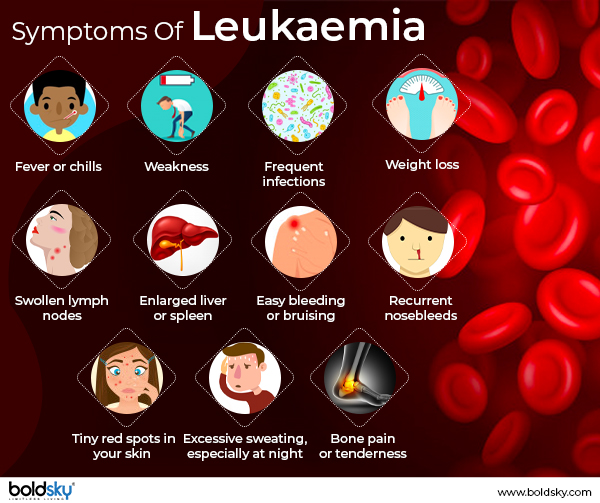Just In
- 2 hrs ago

- 4 hrs ago

- 5 hrs ago

- 7 hrs ago

Don't Miss
- Education
 UP Board Class 10 Result Out, Prachi Nigam Tops the Exam, Check the Class 10 Topper's List Here
UP Board Class 10 Result Out, Prachi Nigam Tops the Exam, Check the Class 10 Topper's List Here - News
 Collective Newsroom Launches As An Independent News Company
Collective Newsroom Launches As An Independent News Company - Sports
 IPL 2024: CSK coach Stephen Fleming talks about space 'owned' by MS Dhoni, calls 42-year-old heartbeat of team
IPL 2024: CSK coach Stephen Fleming talks about space 'owned' by MS Dhoni, calls 42-year-old heartbeat of team - Finance
 Elon Musk Postpones India Trip, Tesla's Indian Market Entry Delayed
Elon Musk Postpones India Trip, Tesla's Indian Market Entry Delayed - Movies
 Love, Sex Aur Dhokha 2: The REAL Reason Of Rajkummar Rao And Nushrratt Bharuccha Not Being Part Of The Film
Love, Sex Aur Dhokha 2: The REAL Reason Of Rajkummar Rao And Nushrratt Bharuccha Not Being Part Of The Film - Technology
 Best Noise-Cancelling Earbuds Under Rs 5,000: CMF Buds Pro, Redmi Buds 5, Realme Buds Air 5, and More
Best Noise-Cancelling Earbuds Under Rs 5,000: CMF Buds Pro, Redmi Buds 5, Realme Buds Air 5, and More - Automobiles
 Tesla CEO Elon Musk's Much-Awaited Visit to India Deferred, Leaving Questions Unanswered
Tesla CEO Elon Musk's Much-Awaited Visit to India Deferred, Leaving Questions Unanswered - Travel
 Journey From Delhi To Ooty: Top Transport Options And Attractions
Journey From Delhi To Ooty: Top Transport Options And Attractions
Hair Dyes May Increase The Risk Of Blood Cancer, Says Study
At least once in your lifetime you may have had your hair coloured. Be it to cover up that grey hair or to flaunt some rainbow colours, hair colouring is indeed a timeless fad. As per reports, more than 35 per cent of women and 20 per cent of men use these chemical hair colours. With varying types of hair dyes available, such as, temporary dyes, semi-permanent dyes and permanent hair dyes, the chemical impact these have are not only on your hair but also your overall health [1] .
Hair dyes are a mixture of different types of chemicals, where some have been regarded as being carcinogenic by studies. While getting that extra oomph added your hair, you may be at the risk of developing or increasing the risk of cancer [2] .
Risk Factors For Hair Dye-induced Cancer
The type of exposure an individual has toward hair dye is a major factor that can increase the risk of cancer development. Hairstylists, barbers etc. are at heightened risk as they are constantly exposed to hair dyes (and the chemicals). One other factor is the length of use, that is, individuals who have been using dyes for as long as the 1980s are at a higher risk because then dyes had more potential carcinogens [3] .
One of the major factors affecting the risk of cancer-related to hair dye is genetics. That is, the cancer-causing chemicals linked to hair dye are members of a class of chemicals known as aromatic amines which are detoxified by your body [2] . But, the genetic structure of some individuals makes it impossible for them to detoxify the compounds and increase a hair-dye user's risk of non-Hodgkin's lymphoma or leukaemia.
These are the most common (harmful) chemicals found in hair dyes.

The frequency of hair dyeing is also a factor because the more often you are exposed to the chemicals in it. Also, dark hair dye colours like black and brown contain more carcinogenic chemicals [3] .
Long-term Hair Dye Use Can Increase Blood Cancer Risk
According to studies, continuous use of semi-permanent and permanent hair dyes (dark colours) increase the risk of blood cancer [4] . Semi-permanent dyes are the type of dyes that penetrate the hair shaft and last for 5 to 10 washings, whereas permanent or oxidative hair dyes cause lasting chemical changes in the hair shaft and are largely linked to cancer risk.

Researchers have been exploring the (possible) link between hair dye use and cancer and have asserted that it has the potential to elevate the risk of blood cancers (leukaemia and lymphoma). It has been proven that certain chemicals present in these hair dyes have carcinogenic properties. That being said, exposure to a carcinogen increases one's risk of cancer [5] .
Studies have pointed out that over 5,000 different chemicals are used in hair dye products, some of which are reported to be carcinogenic. Some studies have linked the personal use of hair dyes with increased risks of certain cancers of the blood and bone marrow, such as non-Hodgkin lymphoma (NHL) and leukaemia [6] .
Other Types Of Cancer That Can Occur
Although the most common cancer triggered through the constant use of hair dyes is a risk of non-Hodgkin's lymphoma and leukaemia in women, studies have pointed out that it can elevate the risk of other types of cancer as well [7] .
Bladder cancer: There has been contradictory opinion on this aspect. Some studies have pointed out hair dye can increase the risk of bladder cancer, recent studies have said otherwise. However, it has also been pointed out that the lack of any cancer risk in recent times can be due to the carcinogenic chemicals being discarded [8] .
Breast cancer: Studies suggest that there is a connection between dark hair dyes and breast cancer [9] .
Prostate cancer: A study pointed out that hair dye may increase a person's risk for prostate cancer.
Permanent (Oxidative) Hair Dyes Cause More Harm
On studying the impact the chemicals in hair dye can have on triggering leukaemia, it was asserted that permanent or oxidative hair dye cause more damage than the semi-permanent and temporary (non-oxidative) ones [9] . It is because, non-oxidative hair dyes do not make use of a developer and simply coats the hair shaft, thereby not removing the natural hair pigments.

However, permanent or oxidative hair dye must be activated by mixing an oxidizing agent like hydrogen peroxide with ammonia and a colouring agent which then opens up the outermost layer of your hair shaft, causing the chemicals to settle down into your system and cause allergies and trigger leukaemia or another type of cancers [10] .
Safer Options
With various studies going back and forth between the possible impact hair dyes can have on triggering the risk of cancer, it can be summarised that the link between using modern hair dyes and cancer is, very minimal, however, present [11] .
With studies still ongoing, it is best to take up alternative methods or colour your hair in a well-ventilated room or salon, to minimise exposure to the fumes from hair dyes [12] . Some of the safer and common alternative options for hair dye are as follows [13] :
- Henna
- Organic hair dye
- Graphene
- [1] Turati F, Pelucchi C, Galeone C et al. Personal hair dye use and bladder cancer: a meta-analysis. Annals of Epidemiology. 2014; 24(2); 151-159. See also: Takkouche, B., M. Etminan, and A. Montes-Martinez, Personal use of hair dyes and risk of cancer: a meta-analysis. JAMA, 2005. 293(20): p. 2516-25.
- [2] Koutros K, Silverman D, Baris D et al. Hair dye use and risk of bladder cancer in the New England bladder cancer study. Int J Cancer, 2011; 129:2894-2904.
- [3] Zheng T, Holford TR, Mayne ST, Owens PH, Boyle P, Zhang B, et al. Use of hair colouring products and breast cancer risk: a case-control study in Connecticut. Eur J Cancer. 2002 Aug;38(12):1647-52.
- [4] IARC Working Group. IARC working group on the evaluation of carcinogenic risks to humans: Occupational exposures of hairdressers and barbers and personal use of hair colourants; some hair dyes, cosmetic colourants, industrial dyestuffs and aromatic amines. Lyon, France; 1993.
- [5] Llanos, Adana AM, Rabkin, Anna, Bandera, Elisa V, Zirpoli, Gary, Gonzalez, Brian D, Xing, Cathleen Y, Qin, Bo, et al. Hair Product Use and Breast Cancer Risk Among African American and White Women. Carcinogenesis, 2017 38(9): p. 883-892.
- [6] Czene K, Tiikkaja S, Hemminki K. Cancer risks in hairdressers: assessment of carcinogenicity of hair dyes and gels. Int J Cancer. 2003 May 20;105(1):108-12.
- [7] Qin, L., Deng, H. Y., Chen, S. J., & Wei, W. (2019). A Meta-Analysis on the Relationship Between Hair Dye and the Incidence of Non-Hodgkin’s Lymphoma. Medical Principles and Practice, 28(3), 222-230.
- [8] Liu, B., Jin, S. F., Li, H. C., Sun, X. Y., Yan, S. Q., Deng, S. J., & Zhao, P. (2019). The Bio-Safety Concerns of Three Domestic Temporary Hair Dye Molecules: Fuchsin Basic, Victoria Blue B and Basic Red 2. Molecules, 24(9), 1744.
- [9] Khan, S., Sultana, N., & Ahmad, S. (2019). Health Risks of Synthetic Hair Dyes; Advantages of Natural Hair Dying Agents in Unani Medicine. Traditional and Integrative Medicine, 37-46.
- [10] Jamagondi, L. N., Katte, A. S., Rumane, M. B., Mirza, N. N., Sontakke, S. S., Kale, A. R., & Pathan, M. A. (2019). Development and evaluation of herbal hair dye formulation. Journal of Pharmacognosy and Phytochemistry, 8(2), 1363-1365.
- [11] Dias, M. F. R. G., Pirmez, R., Dutra, H., & Tosti, A. (2020). Hair Straightening and Hair Dyes: Facts and Controversies. In Hair and Scalp Treatments (pp. 285-290). Springer, Cham.
- [12] Goel, M. S., & Overholser, L. (2019). Cancer Prevention. In Caring for Patients Across the Cancer Care Continuum (pp. 7-33). Springer, Cham.
- [13] Citron-Fink, R. (2019). True Roots: What Quitting Hair Dye Taught Me about Health and Beauty. Island Press.
-
 disorders cureExpert Article: Holistic Cancer Care - Awareness About Ayurvedic Treatment And Management Of Cancer
disorders cureExpert Article: Holistic Cancer Care - Awareness About Ayurvedic Treatment And Management Of Cancer -
 wellnessRishi Kapoor Passes Away Of Acute Myeloid Leukaemia: Know More About This Cancer
wellnessRishi Kapoor Passes Away Of Acute Myeloid Leukaemia: Know More About This Cancer -
 disorders curePolycythemia: Causes, Symptoms, Risk Factors, Diagnosis, Treatment And Prevention
disorders curePolycythemia: Causes, Symptoms, Risk Factors, Diagnosis, Treatment And Prevention -
 disorders cureLeukaemia : Causes, Symptoms, Diagnosis, Prevention And Treatment
disorders cureLeukaemia : Causes, Symptoms, Diagnosis, Prevention And Treatment -
 wellness9 Dangerous Symptoms Of Leukemia (Blood Cancer) In Children (International Childhood Cancer Day)
wellness9 Dangerous Symptoms Of Leukemia (Blood Cancer) In Children (International Childhood Cancer Day) -
 wellnessVitamin C May Stave Off Blood Cancer: Study
wellnessVitamin C May Stave Off Blood Cancer: Study -
 disorders cureKirron Kher Suffering From Blood Cancer: Know The Early Signs Of This Cancer
disorders cureKirron Kher Suffering From Blood Cancer: Know The Early Signs Of This Cancer -
 hair careHow To Make Hair Dye Last Longer On Your Hair: Haircare Tips For Coloured Hair
hair careHow To Make Hair Dye Last Longer On Your Hair: Haircare Tips For Coloured Hair -
 hair careOn Adah Sharma’s Birthday, Her 4 Awesome Bright Hair Colour Picks You Could Easily Flaunt
hair careOn Adah Sharma’s Birthday, Her 4 Awesome Bright Hair Colour Picks You Could Easily Flaunt -
 hair careChristmas 2020: After Sunny Leone, Dhvani Bhanushali Dyes Her Hair Red; Are You The Next One In Line?
hair careChristmas 2020: After Sunny Leone, Dhvani Bhanushali Dyes Her Hair Red; Are You The Next One In Line? -
 hair careThis All-Natural Henna Hair Dye Is The Only Remedy You Need For Your Grey Hair
hair careThis All-Natural Henna Hair Dye Is The Only Remedy You Need For Your Grey Hair -
 hair careThis Winter Season, Get Ready To Raise The Temperature With These New Hair Colour Trends
hair careThis Winter Season, Get Ready To Raise The Temperature With These New Hair Colour Trends


 Click it and Unblock the Notifications
Click it and Unblock the Notifications



